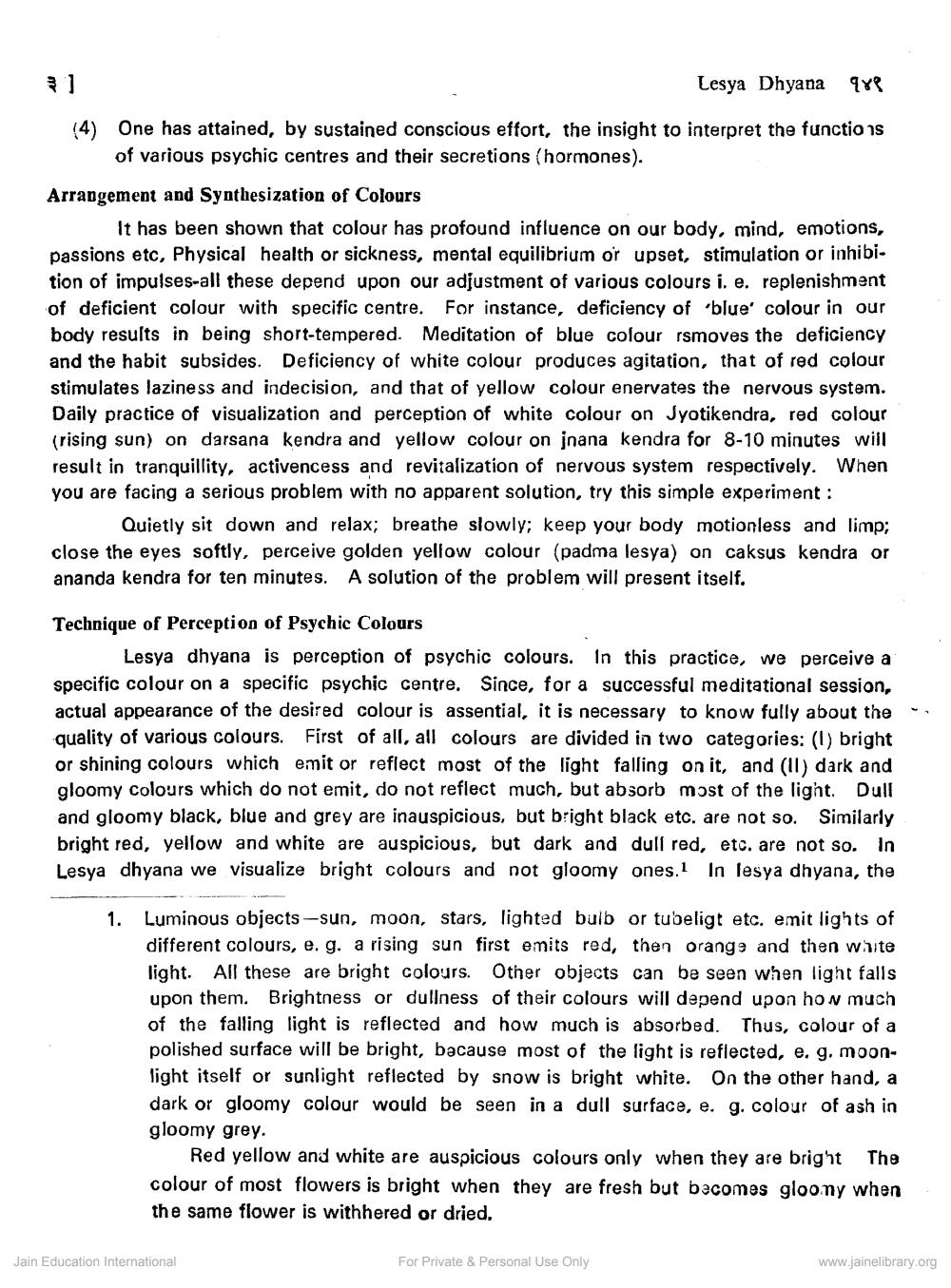________________
Lesya Dhyana 98
(4) One has attained, by sustained conscious effort, the insight to interpret the functions
of various psychic centres and their secretions (hormones). Arrangement and Synthesization of Colours
It has been shown that colour has profound influence on our body, mind, emotions, passions etc, Physical health or sickness, mental equilibrium or upset, stimulation or inhibi. tion of impulses-all these depend upon our adjustment of various colours i. e. replenishment of deficient colour with specific centre. For instance, deficiency of blue colour in our body results in being short-tempered. Meditation of blue colour rsmoves the deficiency and the habit subsides. Deficiency of white colour produces agitation, that of red colour stimulates laziness and indecision, and that of yellow colour enervates the nervous system. Daily practice of visualization and perception of white colour on Jyotikendra, red colour (rising sun) on darsana kendra and yellow colour on jnana kendra for 8-10 minutes will result in tranquillity, activencess and revitalization of nervous system respectively. When you are facing a serious problem with no apparent solution, try this simple experiment :
Quietly sit down and relax; breathe slowly; keep your body motionless and limp; close the eyes softly, perceive golden yellow colour (padma lesya) on caksus kendra or ananda kendra for ten minutes. A solution of the problem will present itself.
Technique of Perception of Psychic Colours
Lesya dhyana is perception of psychic colours. In this practice, we perceive a specific colour on a specific psychic centre. Since, for a successful meditational session, actual appearance of the desired colour is assential, it is necessary to know fully about the quality of various colours. First of all, all colours are divided in two categories: (1) bright or shining colours which emit or reflect most of the light falling on it, and (ll) dark and gloomy colours which do not emit, do not reflect much, but absorb most of the light. Dull and gloomy black, blue and grey are inauspicious, but bright black etc. are not so. Similarly bright red, yellow and white are auspicious, but dark and dull red, etc. are not so. In Lesya dhyana we visualize bright colours and not gloomy ones. In lesya dhyana, the
1. Luminous objects-sun, moon, stars, lighted bulb or tubeligt etc. emit lights of
different colours, e. g. a rising sun first emits red, then orange and then white light. All these are bright colours. Other objects can be seen when light falls upon them. Brightness or dullness of their colours will depend upon how much of the falling light is reflected and how much is absorbed. Thus, colour of a polished surface will be bright, bacause most of the light is reflected, e. g. moonlight itself or sunlight reflected by snow is bright white. On the other hand, a dark or gloomy colour would be seen in a dull surface, e. g. colour of ash in gloomy grey.
Red yellow and white are auspicious colours only when they are bright The colour of most flowers is bright when they are fresh but becomes gloony when the same flower is withhered or dried.
Jain Education International
For Private & Personal Use Only
www.jainelibrary.org




